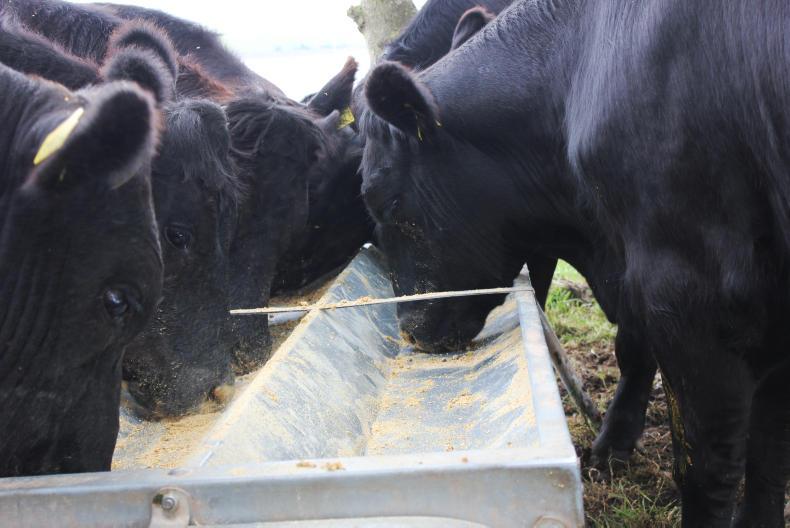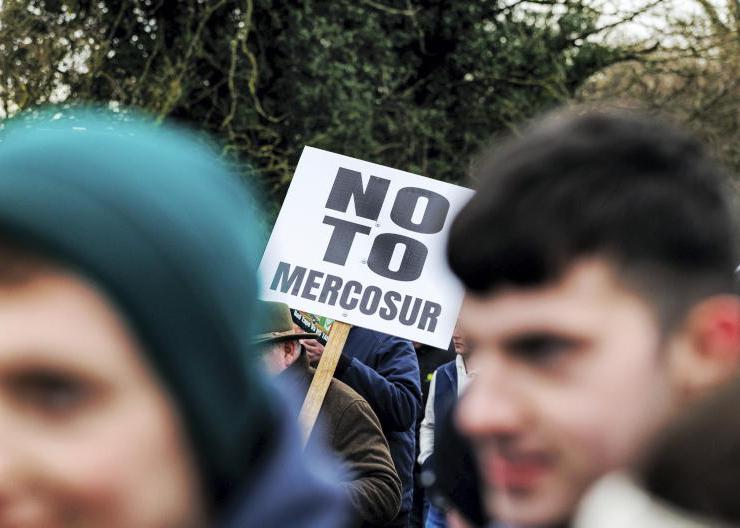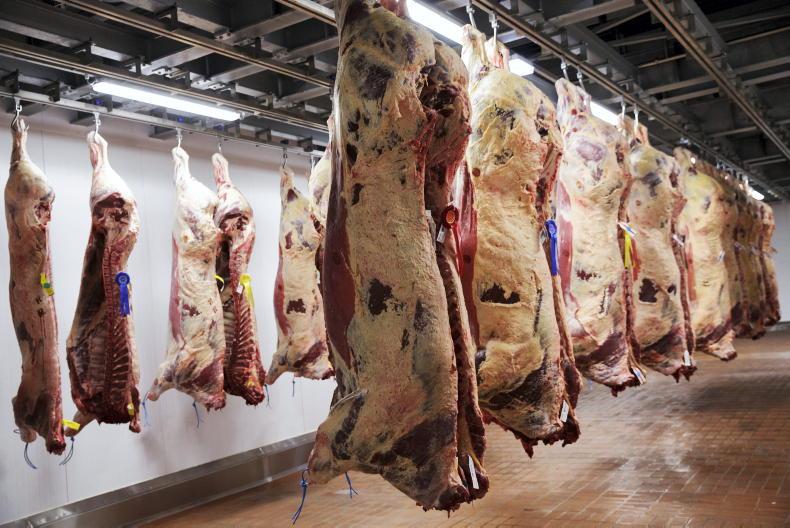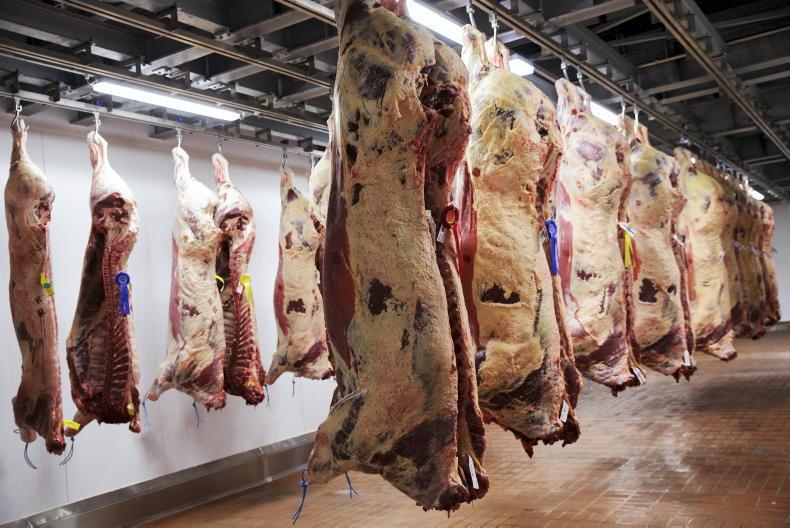I’ve heard it said that irrespective of the type of animal, there’s about £300 (per annum) of a gain between buying and selling in a store to beef system.
It’s a nice round figure and makes for easy counting when it comes to doing those on-the-spot calculations. And strangely enough, when I sold a few black bullocks last week, the gap from purchase to sale (after factory deductions) was bang on the £300.
I’ve almost got to the point of not counting, because I don’t expect to make money at beef
They’d been with me for almost eight months. I suppose the devil is in the detail, and how much of this £300 is retained as true profit is one of those endless conundrums that we could argue about forever.
I’ve almost got to the point of not counting, because I don’t expect to make money at beef, and if the gap shoots up to £500, then stores simply soar in price, and we are no further forward in real terms.
I’m sure plenty of people disagree with this sentiment, and yet I have never seen a set of genuine accounted figures to disprove my theory. Isn’t there some old expression about the pointlessness of flogging a dead horse?
Cynical? Me? Never
However, if the rumours and agricultural press are anything to go by, we’re in line to receive some sort of handout due to the ravages of coronavirus and its depressing effect on beef prices.
Fifty or sixty quid per head will be useful: not for me personally, but it may eventually filter its way into the fabric of our rural economy and may even prolong the livelihoods of beleaguered suckler farmers. Again, it’s this age-old farmer tendency of getting any sort of financial backup to support beef animals, and then immediately spending it on stores that have risen in value by the corresponding amount. Cynical? Me? Never.
Reassess
It wasn’t my intention to sell cattle in early June, but weather conditions made me reassess all previous plans. The dry weather has seen grass growth fall off dramatically, and it seems inconceivable to think in late April I was convinced that grass was irretrievably ahead of all stock.
I couldn’t see the point of sowing fertiliser without imminent rainfall
The horrible truth had to be confronted when silage yields managed a meagre six bales per acre. Suddenly, the mental arithmetic told me that 450 lambs, 16 beef bullocks and over 70 dairy-bred heifers, plus another 12 acres of second-cut silage just wouldn’t divide by the available acres.
I couldn’t see the point of sowing fertiliser without imminent rainfall, so I opted for plan B, and ordered another 6t of meal.
Speaking as someone who puts some effort into utilising grass as a cheap fattening option, it feels slightly strange to be feeding winter quantities of concentrate in the middle of glorious summer weather.
Fingers crossed
The four strongest steers were also closest to being finished, so I marked them, booked them in for slaughter, and kept my fingers crossed that they had displayed compensatory growth since going to grass on 10 April.
I gave up pricing beef or lamb years ago
My prayers were duly answered, and they averaged 353kg. In addition, they were 3+ and 4 for fat cover, so I maybe wasn’t miles away in my selection process. When the cheque came in at the end of the week, I also discovered the price, and it was higher than I had imagined.
For anyone recoiling in horror at this lack of business acumen, I gave up pricing beef or lamb years ago, and let other more experienced characters argue on my behalf. Sometimes it’s best to say nothing and be thought an idiot, than open your mouth and remove all doubt.
Read more
An idle mind is a dangerous thing
Watch: Farmer Writes – still coming to terms with dairy heifers
I’ve heard it said that irrespective of the type of animal, there’s about £300 (per annum) of a gain between buying and selling in a store to beef system.
It’s a nice round figure and makes for easy counting when it comes to doing those on-the-spot calculations. And strangely enough, when I sold a few black bullocks last week, the gap from purchase to sale (after factory deductions) was bang on the £300.
I’ve almost got to the point of not counting, because I don’t expect to make money at beef
They’d been with me for almost eight months. I suppose the devil is in the detail, and how much of this £300 is retained as true profit is one of those endless conundrums that we could argue about forever.
I’ve almost got to the point of not counting, because I don’t expect to make money at beef, and if the gap shoots up to £500, then stores simply soar in price, and we are no further forward in real terms.
I’m sure plenty of people disagree with this sentiment, and yet I have never seen a set of genuine accounted figures to disprove my theory. Isn’t there some old expression about the pointlessness of flogging a dead horse?
Cynical? Me? Never
However, if the rumours and agricultural press are anything to go by, we’re in line to receive some sort of handout due to the ravages of coronavirus and its depressing effect on beef prices.
Fifty or sixty quid per head will be useful: not for me personally, but it may eventually filter its way into the fabric of our rural economy and may even prolong the livelihoods of beleaguered suckler farmers. Again, it’s this age-old farmer tendency of getting any sort of financial backup to support beef animals, and then immediately spending it on stores that have risen in value by the corresponding amount. Cynical? Me? Never.
Reassess
It wasn’t my intention to sell cattle in early June, but weather conditions made me reassess all previous plans. The dry weather has seen grass growth fall off dramatically, and it seems inconceivable to think in late April I was convinced that grass was irretrievably ahead of all stock.
I couldn’t see the point of sowing fertiliser without imminent rainfall
The horrible truth had to be confronted when silage yields managed a meagre six bales per acre. Suddenly, the mental arithmetic told me that 450 lambs, 16 beef bullocks and over 70 dairy-bred heifers, plus another 12 acres of second-cut silage just wouldn’t divide by the available acres.
I couldn’t see the point of sowing fertiliser without imminent rainfall, so I opted for plan B, and ordered another 6t of meal.
Speaking as someone who puts some effort into utilising grass as a cheap fattening option, it feels slightly strange to be feeding winter quantities of concentrate in the middle of glorious summer weather.
Fingers crossed
The four strongest steers were also closest to being finished, so I marked them, booked them in for slaughter, and kept my fingers crossed that they had displayed compensatory growth since going to grass on 10 April.
I gave up pricing beef or lamb years ago
My prayers were duly answered, and they averaged 353kg. In addition, they were 3+ and 4 for fat cover, so I maybe wasn’t miles away in my selection process. When the cheque came in at the end of the week, I also discovered the price, and it was higher than I had imagined.
For anyone recoiling in horror at this lack of business acumen, I gave up pricing beef or lamb years ago, and let other more experienced characters argue on my behalf. Sometimes it’s best to say nothing and be thought an idiot, than open your mouth and remove all doubt.
Read more
An idle mind is a dangerous thing
Watch: Farmer Writes – still coming to terms with dairy heifers










SHARING OPTIONS